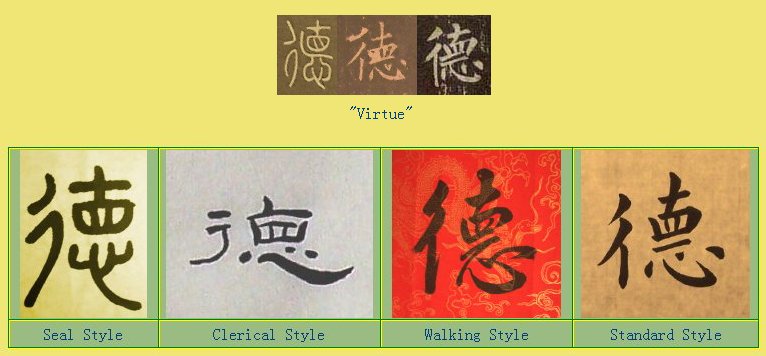
Notes to Free Chinese Calligraphy Models
The English meaning and the approximate pronunciation of each Chinese character are based on NJStar Chinese Word Processor. (Free download from http://www.njstar.com/.) The software has a function to switch from Traditional Chinese Characters to Simplified Chinese Characters, or vice versa.
It's not advisable to pronunciate other languages based on one's first language's phonetics, alphabets, characters, or the so-called Pinyin. It's recommended that the beginners start a new language based on that language's phonetics or pronunciation so the student won't need tone and accent correction in the future or make communication confusing to the people who speak that native language.
Only Traditional Chinese Characters are provided in the "Free Models." Students, teachers, and calligraphers in mainland China practice calligraphy in Traditional Chinese Characters, not their own Simplified Chinese Characters. Chinese characters are written from top to bottom, and then from right to left. (The Chinese math and science textbooks and computer fonts are read from left to right and then from top to bottom, just like English.)
The writing of Chinese calligraphy art may be somewhat different from the standard writing of Kai Style (Kai Shu) in our modern time and as printed in Chinese dictionaries and newspapers. This webpage is created mainly for the art of writing Chinese characters; it does not mean to replace our standardized writing as taught in school or as printed in Chinese dictionaries. If such difference in writing a stroke or strokes exists in a character, a standardized font will be added by the character in the respective sheet.
In ancient times, a Chinese character could be written in several or many different ways. In fact, Chinese calligraphers played a vital role in the evolution of Chinese characters. Oftentimes an average Chinese person today without enough training or knowledge in calligraphy may point out to each other or a non-Chinese person and say, "Look at that character. It's missing a dot or a stroke or it has an extra stroke. The Chinese calligrapher just wrote it incorrectly." Then we need not argue with them. We need to explain to them that the writing as practiced by Chinese callipraphers and calligraphy students are somewhat different from our current standardized writing.
One of the many examples would be the dot is almost always missing in the character "¹í" (ghost) in Chinese calligraphy masterpieces and models. We won't be able to find Chinese calligraphy works written with that dot for this character in most ancient masterpieces.
Another example is the horizontal stroke in the middle of "µÂ" (virtue) is usually ommited in calligraphic writing of Standard Style, partially because in many ancient versions of Seal and Clerical Styles that horizontal stroke was not written. It's also because it was not easy to unify everything in ancient China due to China's long history and territory. Today, if we don't write the horizontal stroke in the middle of "µÂ", most people (except those who have learned calligraphy) will consider it's incorrect!

¡¡
The sequence of the models are based upon the levels of "writing" Chinese characters. The meaning and approximate pronunciation and sometimes the sequence of strokes are provided. Similar sub-styles of Kai and Li may be presented for the reader's selection.